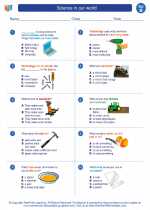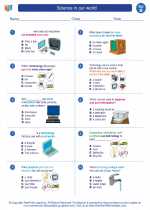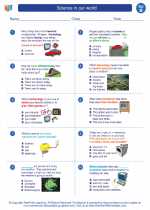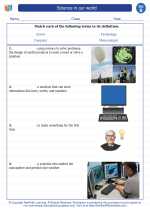Appearance
Appearance refers to the way something looks or how it presents itself to our senses. It includes the color, shape, size, texture, and other physical attributes of an object or organism.
Key Concepts
- Color: The visual perception of different wavelengths of light. Objects appear to have different colors based on the wavelengths of light they reflect or emit.
- Shape: The form or outline of an object or organism, determined by its external boundaries.
- Size: The physical dimensions of an object or organism, including height, width, and depth.
- Texture: The feel or appearance of a surface, often described as smooth, rough, bumpy, or uneven.
- Pattern: The arrangement of repeated elements, such as lines, shapes, or colors, in a predictable way.
Study Guide
Here are some key questions and activities to help you understand the concept of appearance:
- What are some examples of objects with different colors, shapes, and sizes?
- Take a nature walk and observe the textures of different leaves, rocks, and tree barks. Describe the textures using words like smooth, rough, or bumpy.
- Look at different patterns in your environment, such as the tiles on the floor, the stripes on a shirt, or the spots on a ladybug. Draw or take pictures of these patterns and discuss how they repeat.
- Compare and contrast the appearance of various fruits and vegetables. How do their colors and shapes differ?
- Observe the appearance of animals and discuss how their physical attributes help them survive in their environments. For example, how does the color of a polar bear's fur help it blend in with its surroundings?
Understanding appearance is important for identifying and categorizing objects, organisms, and natural phenomena. By paying attention to the visual characteristics of the world around us, we can better appreciate its diversity and beauty.
[Appearance] Related Worksheets and Study Guides:
.◂Science Worksheets and Study Guides Second Grade. Science in our world
Study Guide Science in our world
Science in our world  Worksheet/Answer key
Worksheet/Answer key Science in our world
Science in our world  Worksheet/Answer key
Worksheet/Answer key Science in our world
Science in our world  Worksheet/Answer key
Worksheet/Answer key Science in our world
Science in our world  Vocabulary/Answer key
Vocabulary/Answer key Science in our world
Science in our world 

 Worksheet/Answer key
Worksheet/Answer key
 Worksheet/Answer key
Worksheet/Answer key
 Worksheet/Answer key
Worksheet/Answer key
 Vocabulary/Answer key
Vocabulary/Answer key

The resources above cover the following skills:
LIFE SCIENCE (NGSS)
Biological Evolution: Unity and Diversity
Students who demonstrate understanding can:
Make observations of plants and animals to compare the diversity of life in different habitats[Clarification Statement: Emphasis is on the diversity of living things in each of a variety of different habitats.] [Assessment Boundary: Assessment does not include specific animal and plant names in specific habitats.]